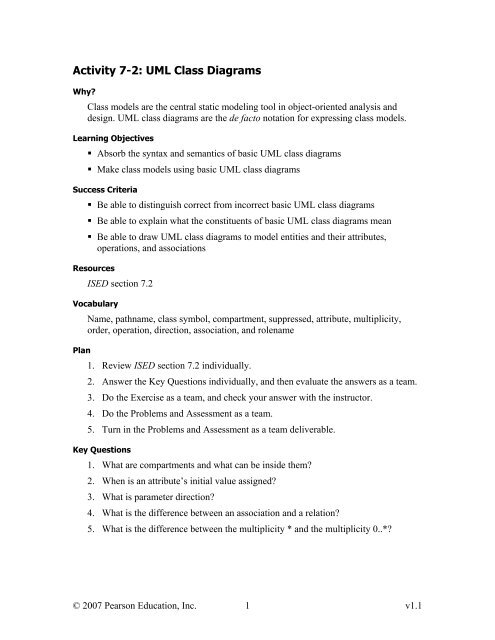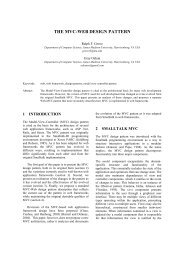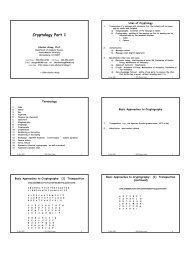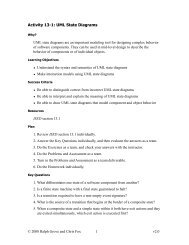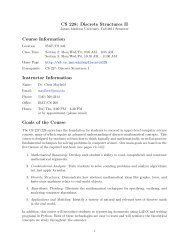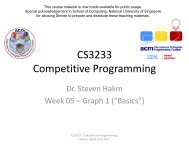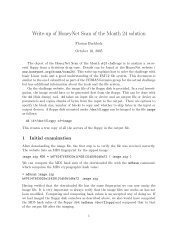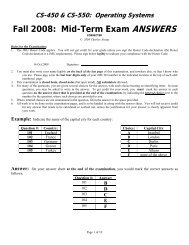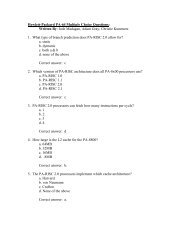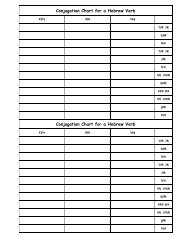UML Class Diagrams
UML Class Diagrams
UML Class Diagrams
Create successful ePaper yourself
Turn your PDF publications into a flip-book with our unique Google optimized e-Paper software.
Activity 7-2: <strong>UML</strong> <strong>Class</strong> <strong>Diagrams</strong>Why?<strong>Class</strong> models are the central static modeling tool in object-oriented analysis anddesign. <strong>UML</strong> class diagrams are the de facto notation for expressing class models.Learning Objectives• Absorb the syntax and semantics of basic <strong>UML</strong> class diagrams• Make class models using basic <strong>UML</strong> class diagramsSuccess Criteria• Be able to distinguish correct from incorrect basic <strong>UML</strong> class diagrams• Be able to explain what the constituents of basic <strong>UML</strong> class diagrams mean• Be able to draw <strong>UML</strong> class diagrams to model entities and their attributes,operations, and associationsResourcesISED section 7.2VocabularyPlanName, pathname, class symbol, compartment, suppressed, attribute, multiplicity,order, operation, direction, association, and rolename1. Review ISED section 7.2 individually.2. Answer the Key Questions individually, and then evaluate the answers as a team.3. Do the Exercise as a team, and check your answer with the instructor.4. Do the Problems and Assessment as a team.5. Turn in the Problems and Assessment as a team deliverable.Key Questions1. What are compartments and what can be inside them?2. When is an attribute’s initial value assigned?3. What is parameter direction?4. What is the difference between an association and a relation?5. What is the difference between the multiplicity * and the multiplicity 0..*?© 2007 Pearson Education, Inc. 1 v1.1
Exercise1. The following <strong>UML</strong> class diagram models entities involved in scheduling a roundof golf. Mark all the problems on the diagram.Starterint scheduleRound(in Player[1-4] p, in Day d, in Time t)cancelRound( id )phone : Stringschedule : Round[ordered list]Playername : StringbagWeight : int := 20billingID*Roundmanagesparty roundID : int caddy2,3,4date : DayteeTime : Time1..4numHoles : intassigns*Caddyname : Stringavailability : Hour[*:24]employeeID : intnumBags : intProblems (Deliverable)1. According to the diagram above, how many Players can form a party for a Roundof golf?2. What does the Starter’s schedule consist of?3. What is the default weight for a Player’s bag?4. What would be a good name for the two unlabeled associations in this diagram?5. Do there have to be as many Caddies as Players associated with a Round?6. Use the Java code skeleton below to do the following exercise: Draw a <strong>UML</strong> classdiagram (using only the features discussed so far) to represent as much of theprogram fragment in this Java code as possible.© 2007 Pearson Education, Inc. 2 v1.1
class GameClock {private RenjuGame gameprivate int timeLeft;private Player player;public void start() { ... }public void stop() { ... }public void update( Observable masterClock ) { ... }public int getTimeLeft() { ... }}class MasterClock {private Thread clockThread;public void start() { ... }public void run() { ... }}class Player {private final Offer[] openOffers;private final Game[] activeGames;private int numMatchesWon;private int numMatchesLost;private int numMatchesTied;public void beginGame( RenjuGame game ) { ... }public void endGame( RenjuGame game ) { ... }public boolean isPlaying() { ... }public void winMatch() { ... }public void tieMatch() { ... }public void loseMatch() { ... }}7. Make a <strong>UML</strong> class diagram modeling documents, libraries, and patrons thatincludes classes, attributes, operations, associations, and multiplicities.Assessment (Deliverable)1. Did this activity help you achieve the learning objectives?2. How could the instructor improve this activity?© 2007 Pearson Education, Inc. 3 v1.1


